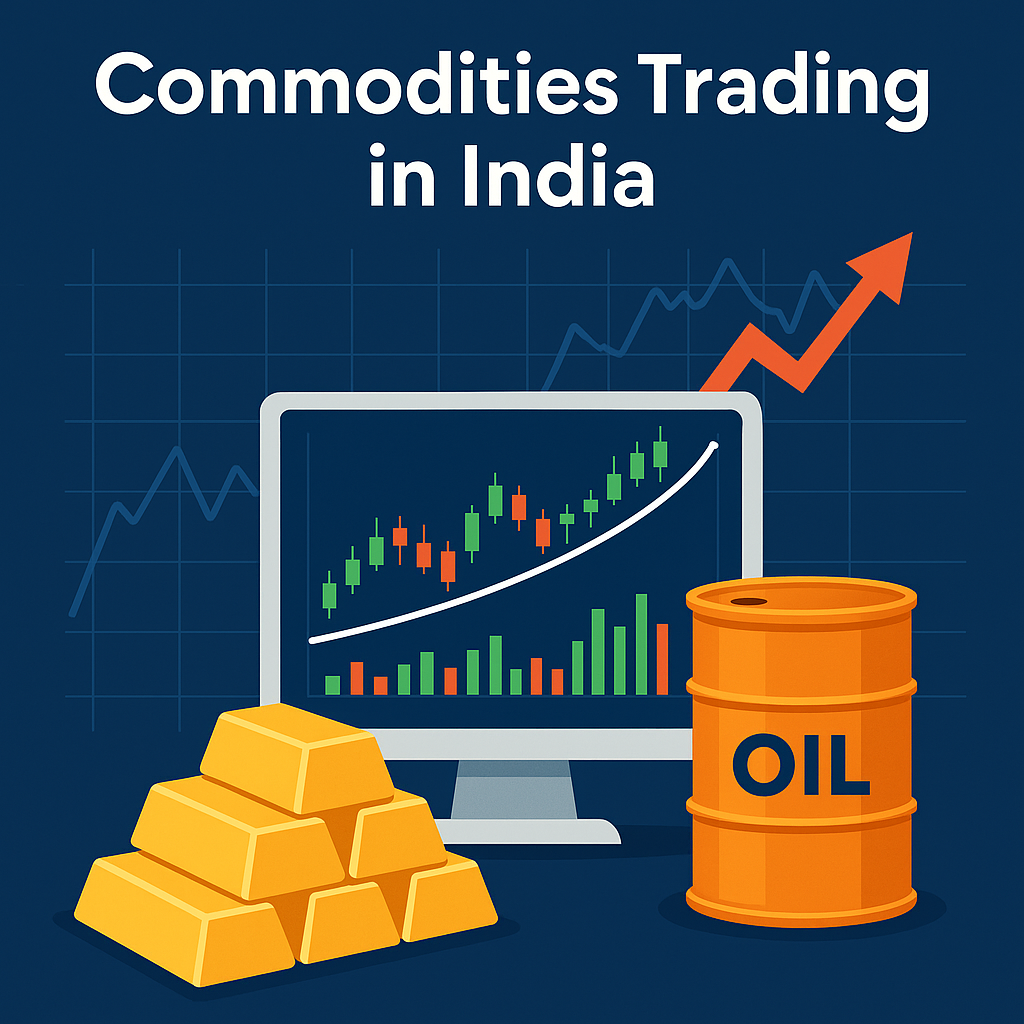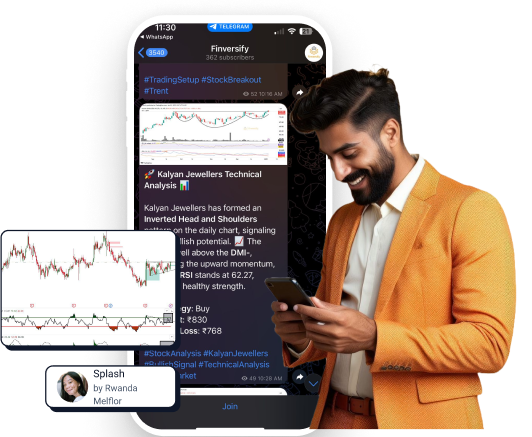
Introduction
The commodities market in India is one of the oldest and most dynamic parts of the financial ecosystem — yet, for many retail investors, it still feels like uncharted territory. From gold and silver to crude oil and agricultural products, commodities offer unique opportunities to diversify portfolios and hedge against inflation.
In this blog, dhwani patel, a SEBI registered research analyst and founder of Finversify, explains how to do commodities trading step-by-step — what it means, how it works on the MCX (Multi Commodity Exchange), and the strategies beginners can use to get started confidently.
1. Understanding What Commodity Trading Means
Commodity trading involves buying and selling raw materials — metals, energy, and agricultural products — either in the spot market (immediate delivery) or the futures market (delivery at a future date).
In India, most trading happens through commodity futures contracts on recognized exchanges such as:
- MCX (Multi Commodity Exchange) — deals in metals, energy, and select agricultural commodities.
- NCDEX (National Commodity & Derivatives Exchange) — primarily agricultural commodities.
Each futures contract represents a standard quantity and quality of a commodity — say 1 kg of gold, or 100 barrels of crude oil — and is traded for a future date at a predetermined price.
2. Why Trade Commodities?
Commodity trading attracts a wide range of participants — hedgers, speculators, and investors — because it provides multiple benefits:
- Diversification: Commodities often move inversely to stocks, helping balance portfolios.
- Hedging: Businesses protect themselves against price fluctuations (e.g., a jewellery manufacturer hedging gold prices).
- Leverage Opportunities: Futures require only a margin deposit — traders can control larger positions with smaller capital.
- Tactical Trading: Price volatility offers short-term opportunities for traders who understand fundamentals and technicals.
3. Key Players in the Commodity Market
- Hedgers: Producers or consumers seeking price protection.
- Speculators: Traders aiming to profit from price movement.
- Arbitrageurs: Exploit price differences between markets.
- Investors: Use commodities for portfolio diversification or inflation hedging.
Each group adds liquidity and balance to the ecosystem.
4. How to Start Commodities Trading in India
If you’re wondering how to do commodities trading practically, here’s the roadmap:
Step 1 — Learn the Basics
Before trading, understand the contract specifications — lot size, expiry date, margin requirements, and tick value. Exchanges like MCX publish detailed information about each commodity.
Step 2 — Choose a Reliable Broker
Select a SEBI-registered broker who provides access to MCX and NCDEX. The best commodity trading platform in India offers:
- Real-time market data
- Mobile and web trading platforms
- Risk management tools
- Transparent brokerage charges
Some popular full-service and discount brokers include Zerodha, Angel One, and ICICI Direct.
Step 3 — Open a Trading & Demat Account
While most commodity trades are settled in cash, a Demat account helps store delivery-based positions. Submit your KYC documents and link your bank account.
Step 4 — Fund Your Account
Deposit the required margin to begin trading. Remember, futures are leveraged instruments — a 5% margin means you can control ₹10 lakh worth of gold with ₹50,000 margin.
Step 5 — Analyze the Market
Combine fundamental analysis (supply, demand, geopolitical risks) with technical analysis (charts, patterns, indicators). This dual approach gives traders an edge.
Step 6 — Place Your Trade
Once confident, select your contract (e.g., Gold December Futures on MCX), choose quantity, and place a buy/sell order.
Step 7 — Monitor & Exit
Track positions continuously. Futures can be squared-off before expiry or carried forward. Always define your stop-loss and profit targets.
5. Commodity Categories You Can Trade
| Category | Examples | Key Drivers |
|---|---|---|
| Precious Metals | Gold, Silver | Inflation, currency strength, central-bank policies |
| Base Metals | Copper, Zinc, Nickel, Aluminium | Industrial demand, global growth |
| Energy | Crude oil, Natural gas | OPEC decisions, geopolitical events |
| Agricultural | Cotton, Soybean, Chana, Sugar | Weather, harvest cycles, demand-supply dynamics |
Each commodity behaves differently — for instance, crude oil reacts to global tensions, while gold moves inversely to the dollar.
6. Understanding Margins and Leverage
In commodity futures, traders pay only a margin (5–10% of contract value). Leverage magnifies profits and losses alike.
Example:
- Gold futures contract = ₹6,00,000
- Margin = 10% → ₹60,000 required
If gold rises by 2%, your position value gains ₹12,000 — a 20% return on margin. But if prices fall 2%, you lose ₹12,000 equally fast.
Hence, risk management is crucial — never over-leverage or trade without stop-loss.
7. Common Mistakes Beginners Make
- Ignoring Global Cues: Commodity prices are global; local traders must watch US and China data.
- Over-Trading: High leverage tempts excessive positions — a common beginner error.
- Neglecting Rollovers: Futures expire monthly; failure to roll can lead to unintended delivery.
- Trading Without Strategy: Jumping in on tips instead of structured MCX trading strategies for beginners leads to inconsistent results.
- Poor Discipline: Emotional trading often wipes out profits.
8. Effective MCX Trading Strategies for Beginners
Here are foundational approaches suitable for new entrants:
(a) Trend-Following Strategy
Trade in the direction of prevailing momentum — use moving averages (50-EMA, 200-EMA) to identify trend continuation setups.
(b) Breakout Strategy
Identify key support/resistance zones. When price breaks with strong volume, enter in the direction of breakout.
(c) Spread Trading
Take opposite positions in two related contracts (like Crude Oil Oct vs. Crude Oil Nov) to benefit from differential moves.
(d) Mean Reversion
When a commodity deviates significantly from its average price, anticipate a return to mean levels — but confirm with volume.
Each of these fits within swing trading strategies India, where trades last from a few hours to several days.
9. Taxation on Commodity Trading
- Profits from futures are treated as business income and taxed according to your income slab.
- Losses can be carried forward for 8 years and offset against business income.
- Traders must maintain records of contract notes, ledger statements, and bank proofs for filing.
Consult your CA to ensure proper accounting and compliance.
10. dhwani patel’s Professional Insights
As a SEBI registered research analyst, dhwani patel emphasizes discipline, education, and risk awareness before entering commodities.
“Commodities reward informed traders. Learn how margin, volatility, and liquidity work before chasing returns. A structured trading plan and controlled position sizing turn speculation into a skill.”
She also recommends starting small — perhaps with MCX mini contracts — before scaling.
11. Risk Management Essentials
- Define Stop-Loss: Limit risk per trade to 1–2% of total capital.
- Avoid Over-Exposure: Never risk all margins on one commodity.
- Diversify: Spread trades across metals, energy, and agri commodities.
- Track Volatility: High-beta commodities like crude oil need tighter control.
- Keep a Trading Journal: Record every trade for learning and pattern recognition.
12. Technology & Tools to Help You Trade Better
Top commodity trading platforms in India provide analytical dashboards, OI heatmaps, and charting features:
- MCX Trader / MCX Touch App
- TradingView integration for charting
- Broker terminals like Zerodha Kite, Angel One SpeedPro, Upstox Pro
Combine platform tools with your index futures trading strategies India workflow for a comprehensive market view.
13. Building a Long-Term Edge
The commodity market is cyclical — global demand, policy shifts, and economic cycles shape it. To stay relevant:
- Keep learning macro-economics.
- Study past cycles of gold, oil, and metals.
- Follow credible research sources instead of unverified tips.
Over time, a trader’s edge is built on discipline + data + patience, not hunches.
Conclusion
Learning how to do commodities trading is not just about placing buy/sell orders — it’s about understanding risk, leverage, and the rhythm of global markets. Whether you’re trading gold, crude, or copper, knowledge and risk management determine longevity.
As dhwani patel advises, “Don’t treat commodity trading as a guessing game. Treat it as a business — plan, execute, review.”
With a structured approach, reliable brokers, and continuous learning, commodities can be a powerful addition to your trading journey.
⚠️ Disclaimer: All trading and investment decisions are subject to market risk.
Disclosure & Disclaimer: dhwani patel (SEBI Registration No. INH200008608) is a SEBI registered research analyst. The views expressed here are for educational and informational purposes only and do not constitute investment advice or a recommendation to buy/sell securities or commodities. Market conditions are subject to change. Readers should perform their own due diligence or consult a licensed advisor before acting.
